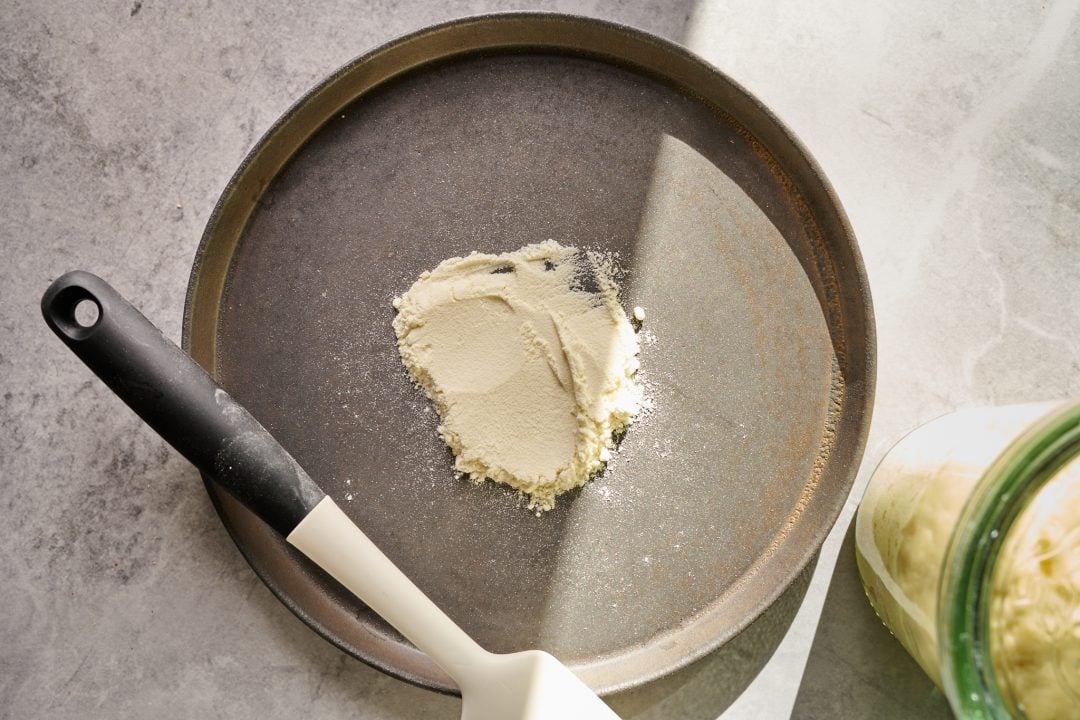Using durum flour in your next bake can transform a so-so loaf into a golden masterpiece. Durum is a wheat variety that’s often used to make pasta. But, it’s also a fantastic option for sourdough bread—if you know how to choose the right flour.
Besides bread recipes, I love using durum flour in my sourdough pizza dough. Durum brings a golden color to the pizza crust and adds crispness. I can bet you’ve had pizza with some percentage of durum mixed into the dough at some point or another. And that pizza might have elicited a “wow, this pizza crust is so good, what’s the secret?” question as you ate your way through a slice.
Before we talk about how to pick the right durum flour for bread (or pizza!), let’s look at what durum wheat is.
At a Glance, Durum Flour:
- Is a variety of wheat
- Adds a golden color to the crust and crumb
- Is high in protein but not high-quality protein for bread-making
- Is most often used in pasta (as semolina)
- Semolina flour is durum wheat milled coarse
- Durum flour is durum wheat milled fine
What is Durum Wheat?
Durum (Latin for “hard”) is a hard wheat that’s high in protein, minerals, and vitamins (like vitamins A, B, and E). Often, you’ll use durum for pasta-making, where it’s milled into coarse semolina. But you can use durum for bread-making when it’s milled into fine flour, too.
While durum wheat is high in protein, the quality isn’t as high for bread-making. Using a high percentage of durum in a recipe will lead to bread with a tighter crumb and less volume. But what you lose in openness and volume, you gain in flavor and texture.
For example, when durum is used in sourdough friselle, the result is a super crispy and crunchy treat with added flavor.
When using durum wheat for bread, you’ll find your bread has a:
- Soft and tight-knit crumb
- Unique, appealing aroma
- Bread with a nutty, almost sweet, flavor
- Golden crust and crumb
- More rustic crust, sometimes with cracks
Next, let’s look at how bakers can use durum wheat to make flour suitable for bread, pizza, and more.
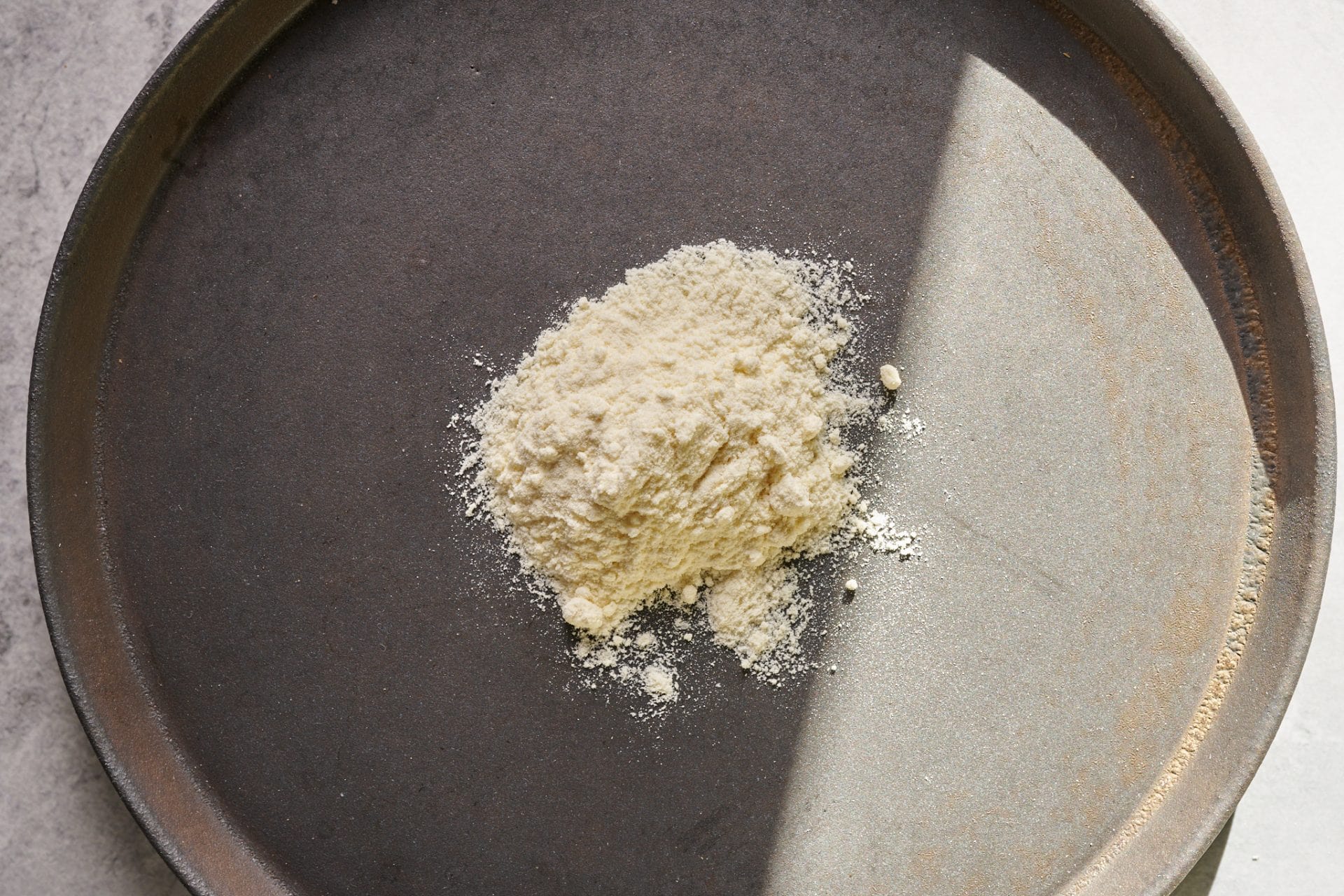
Durum wheat is rich in carotenoid pigments, bringing a highly desirable bright yellow color to pasta and bread.
What Is Durum Flour?
Generally, durum flour is durum wheat milled into a fine powder. It’s also called “durum extra fancy, “ “durum type 00,” or “semolina rimacinata” (twice-milled semolina, in Italian). Since it’s milled into a fine powder, it has better baking performance than coarse semolina.
What Is Durum Flour Good For?
Durum flour is great for bread, focaccia, and pizza; you can even use it to make pasta. When you use it in bread dough, you’ll get a dough that’s elastic and strong. It will result in flavorful bread with a lighter texture and a more open interior.
Why Is Durum Flour Yellow?
Durum wheat is rich in carotenoid pigments, bringing a highly desirable bright yellow color to pasta and bread. These compounds help contribute to the sweet flavor of bread and pasta and bring essential nutrients such as provitamin A and antioxidants.
Can I Use Both Durum Flour and Regular Wheat?
Often, bakers will blend durum with traditional wheat (sometimes even a high-protein white bread flour). Blending the two results in bread with a golden crust and crumb but a lighter and more open interior. The durum adds flavor and color, while the wheat brings better gas-trapping characteristics.
When blending the two, I use around 20 to 40% durum wheat to the total flour (in baker’s percentages) in the recipe. The higher you push the durum percentage, the denser and more cake-like the crumb will become. Though, what you sacrifice in lightness and openness, you gain in color and flavor.
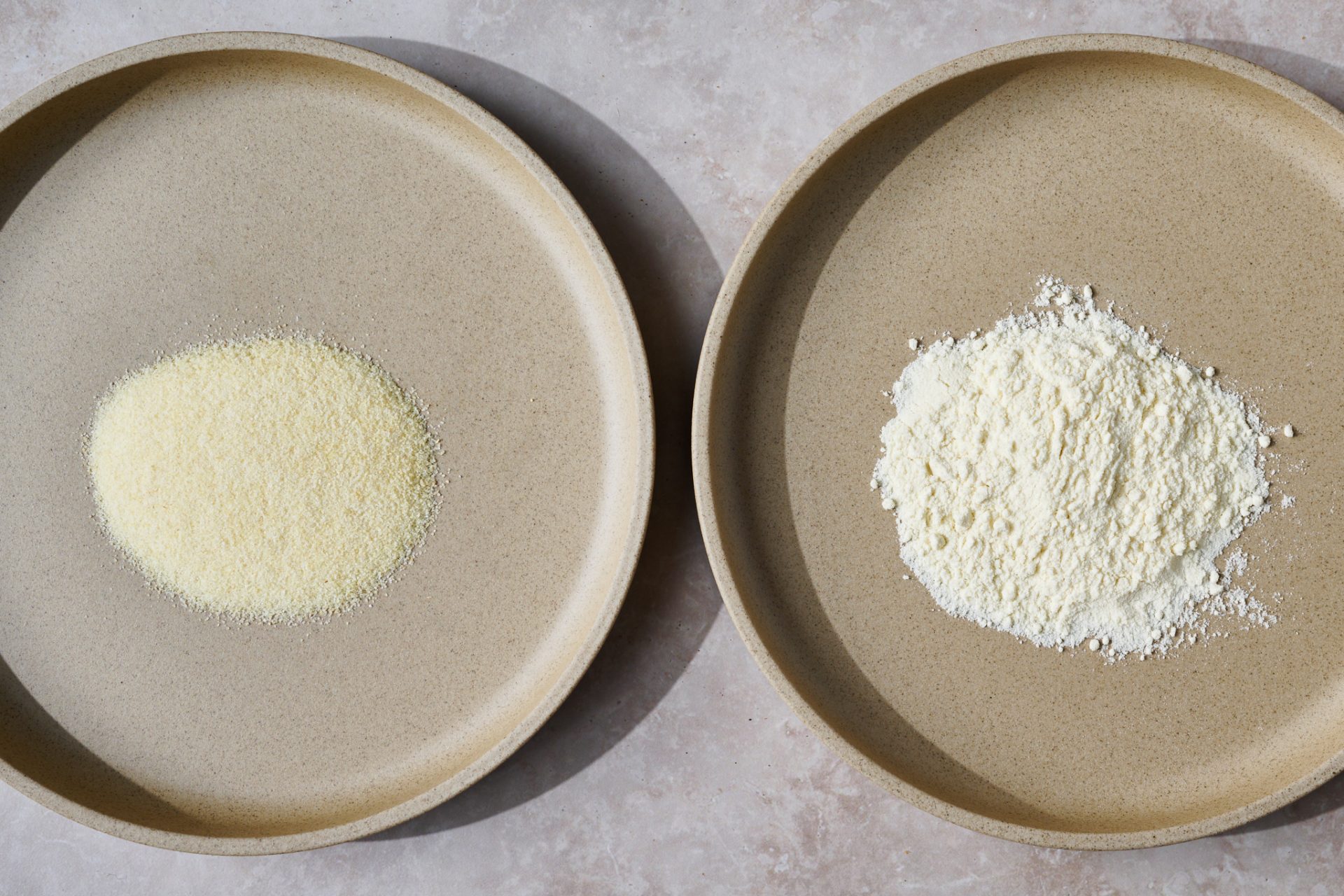
What Is the Difference Between Durum and Semolina?
Semolina is flour made from durum wheat. To make semolina, a miller will mill durum wheat to coarse granularity (like table salt). This coarseness means flour that’s fantastic for pasta-making but less desirable for bread. Using semolina results in a dough that’s strong and elastic. This dough is perfect for rolling, cutting, and pinching pasta.
Using Coarse Semolina in Bread Dough
Using semolina flour in bread is possible (in fact, I use some here in my Seeed Sourdough). But you’ll get better baking results when using durum that’s very finely milled.
So my rule is: if you have semolina and want to bake a recipe calling for durum flour, go for it! But, if you’re at the market or online and see the option, buy durum flour next time for bread-making.
Durum Flour Online Sources
Here are a few places that sell fantastic durum flour suitable for bread (and pasta):
- Central Milling
- Flourist (in Canada)
- King Arthur Baking
- Caputo Antimo Di Grano Duro Rimacinata Semolina Flour
Now that you know where you can buy durum flour, let’s look at some tips for using it in bread.
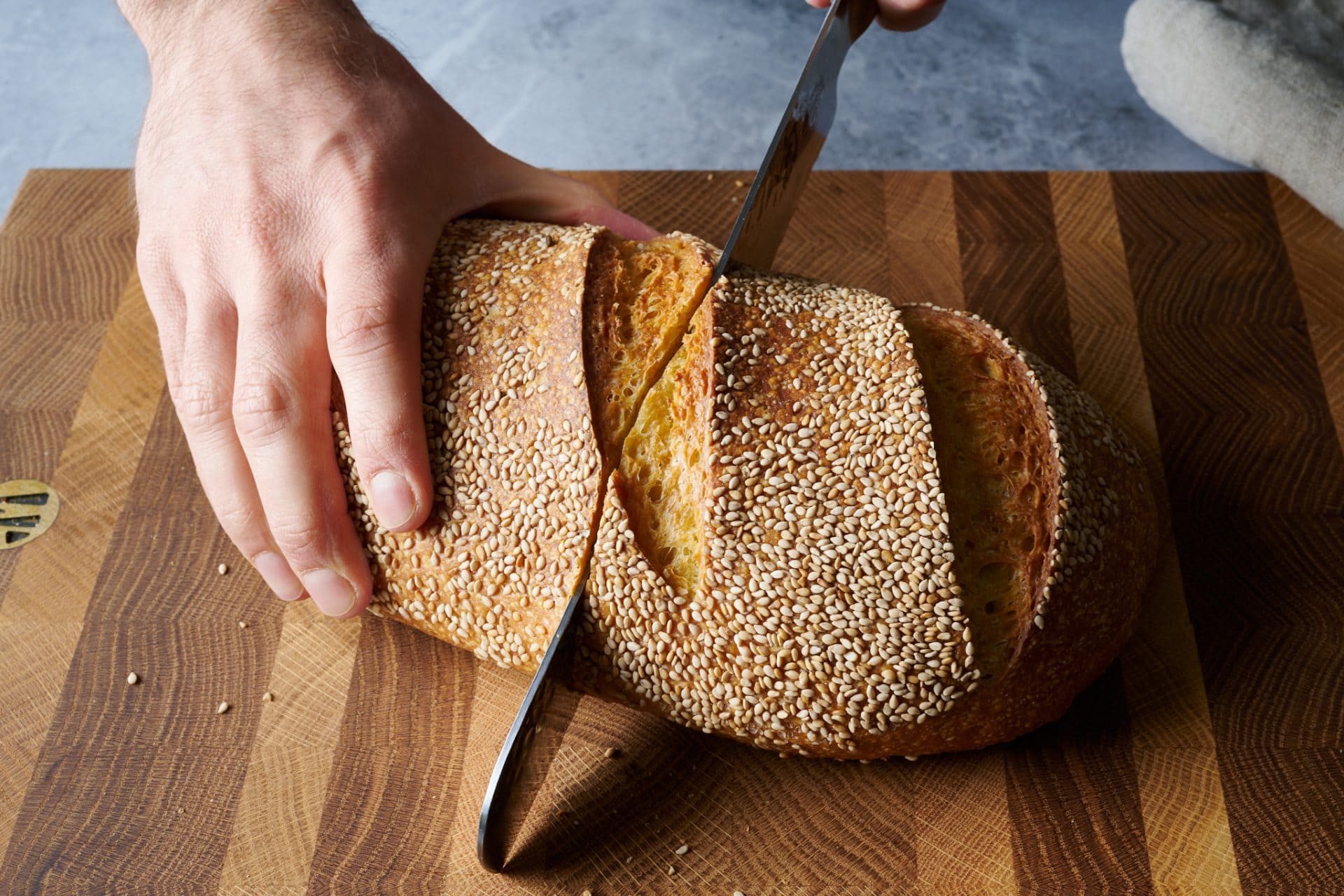
How To Bake Bread With Durum Flour
You can add durum flour to almost any bread recipe rather easily—but there are a few things to look out for. Let’s talk about how durum affects hydration, how to mix, why an autolyse can be helpful, and what to do if your dough is sticky.
Increase The Hydration
In my experience, to achieve a dough with proper hydration, durum flour needs more water. Most of the durum flour I source is from Canada, which tends to need more water. But as always, when mixing bread dough, hold back a small amount of the water during mixing. Add this reserved water in stages to avoid over hydrated the dough during mixing.
Gentle Mixing Is Key
Dough with high percentages of durum flour will have a more delicate structure and can break down easily. As I do with my Pane Siciliano recipe, I prefer hand mixing when using high percentages of durum wheat. Gentle mixing will result in a loaf of bread with more volume and a tenderer, lighter crumb. The slap and fold kneading technique is the perfect technique to use when working with durum.
If you’re using a mechanical mixer on a large batch of dough containing durum wheat, mix on a lower speed for longer. For instance, instead of 3 minutes on speed 1 and 3 minutes on speed 2, do 5 to 6 minutes on speed 1.
Reduce The Fermentation Timeline
Related to the gentle mixing above, reducing the fermentation timeline will help maintain dough structure and reduce dough breakdown. In my Pane Siciliano, I opt for a cold overnight proof, but I would not extend the total fermentation time past 24 hours. A same-day (direct) bread dough might yield greater volume and better internal structure. When baking direct and proofing the dough on the counter, use the poke test to determine when it’s ready to bake.
Perform a Longer Autolyse for Increased Extensibility
Bread dough with a high percentage of durum tends to be very strong and elastic. This is partly due to durum’s high protein content. To reduce dough elasticity, perform an autolyse to increase extensibility.
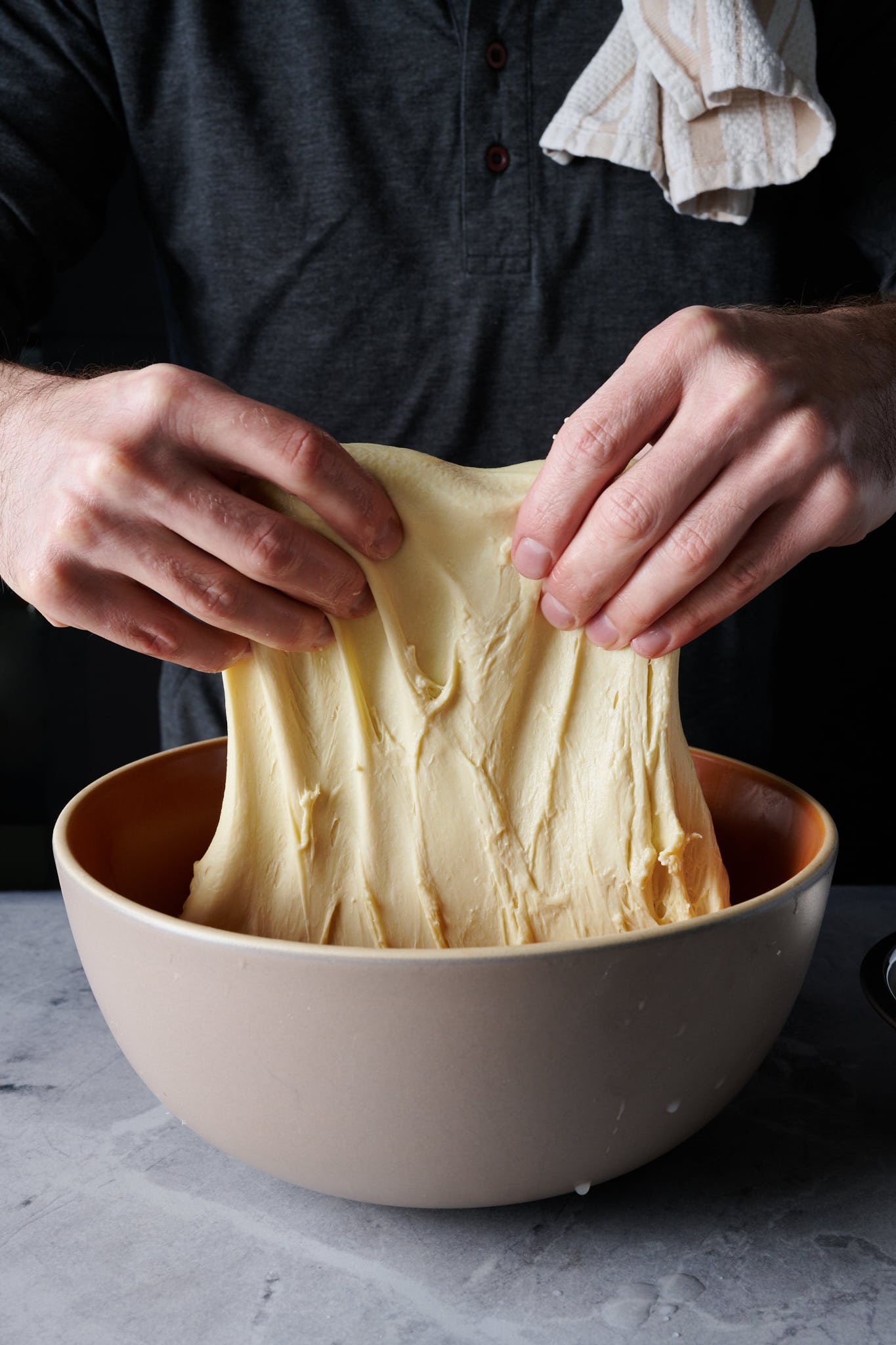
Like I do with my Pane Siciliano, a longer autolyse allows the dough to stretch farther. A dough with high extensibility will be more relaxed and filled with gasses. This results in sourdough bread with more volume and a lighter texture.
The Dough Is Sticky, and That’s Okay
Bread dough containing a high percentage of durum flour will feel sticky—this is normal. The best way to deal with sticky dough is to keep your hands wet or floured at every step.
Additionally, oil your bulk fermentation container to keep it nonstick. Before you transfer mixed and kneaded durum dough into a container, spread a layer of oil from edge to edge. I prefer using olive oil, but a neutral-flavored oil will also work.
Durum Flour FAQs
What else is made with durum wheat?
A variety of other foods are made from durum wheat, including Indian rotis, or chapattis (where durum flour is usually called “chapatti flour”), couscous, and bulgur.
Is Altamura bread made with durum flour?
Altamura is a town and comune of Apuglia in southern Italy. The people in this area are famous for making bread with high percentages of durum flour with a golden crust and crumb.
What’s Next?
Now that you understand durum flour, it’s time to use it and bake some sourdough bread.
Make my Pane Siciliano with 100% durum flour and the most beautiful golden crust and crumb. Or, if you want to blend durum and another wheat, my Seeded Sourdough is delicious.
Happy baking!


